EPA Collaboration with Europe
 EPA Administrator Gina McCarthy meets with French Minister of Ecology, Sustainable Development and Energy Segolene Royal. (June 2015) Photo Credit: Press and Communication Office/French Embassy in Washington, D.C.
EPA Administrator Gina McCarthy meets with French Minister of Ecology, Sustainable Development and Energy Segolene Royal. (June 2015) Photo Credit: Press and Communication Office/French Embassy in Washington, D.C.The United States and Europe enjoy strong and long-standing economic and political relationships and face similar environmental opportunities and challenges. Working together enables us to address environmental impacts of joint concern, achieve common goals on both sides of the Atlantic and demonstrate leadership to help create a cleaner global environment.
EPA encourages and benefits from the exchange of experiences and expertise with European partners -- including the European Commission, EU Member States, other European countries, and multilateral organizations -- to strengthen transatlantic institutions, networks, and relationships and build capacity to solve environmental problems.
Key activities with Europe focus on:
- Improving Air Quality
- Addressing Climate Change
- Promoting Energy Efficiency
- Increasing Resource Efficiency
- Strengthening Chemicals Management
- Enhancing Research Cooperation
- Supporting Environmental Governance
Improving Air Quality
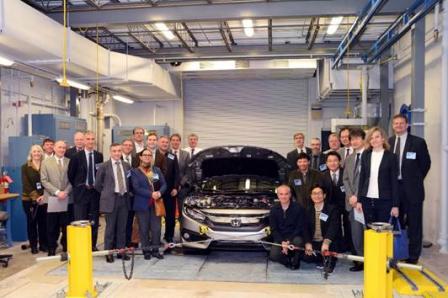 Transportation and health experts from 16 different countries participated in the International Summit on Vehicle Emissions Testing, Compliance and Enforcement at EPA’s National Vehicle and Fuel Emissions Laboratory in Ann Arbor, Michigan. (April 2016)Vehicle Emissions: EPA is working with European and other international partners to reduce vehicle emissions and improve air quality and public health by sharing experiences and strengthening regulatory programs for cars and trucks. Through this international dialogue, EPA and counterpart regulatory agencies in Europe and around the world discuss the importance of vigilant and comprehensive approaches to oversight and compliance with vehicle emissions standards, including varied and rigorous test cycles throughout a vehicle’s lifecycle. As part of this cooperation, European and other international partners have benefited from visits to EPA’s National Vehicle and Fuel Emissions Laboratory (NVFEL) in Ann Arbor, Michigan, a state-of-the-art facility that provides a wide array of analytical testing and engineering services for EPA’s motor vehicle, heavy-duty engine, and nonroad engine programs.
Transportation and health experts from 16 different countries participated in the International Summit on Vehicle Emissions Testing, Compliance and Enforcement at EPA’s National Vehicle and Fuel Emissions Laboratory in Ann Arbor, Michigan. (April 2016)Vehicle Emissions: EPA is working with European and other international partners to reduce vehicle emissions and improve air quality and public health by sharing experiences and strengthening regulatory programs for cars and trucks. Through this international dialogue, EPA and counterpart regulatory agencies in Europe and around the world discuss the importance of vigilant and comprehensive approaches to oversight and compliance with vehicle emissions standards, including varied and rigorous test cycles throughout a vehicle’s lifecycle. As part of this cooperation, European and other international partners have benefited from visits to EPA’s National Vehicle and Fuel Emissions Laboratory (NVFEL) in Ann Arbor, Michigan, a state-of-the-art facility that provides a wide array of analytical testing and engineering services for EPA’s motor vehicle, heavy-duty engine, and nonroad engine programs.
Transboundary Pollution: Since air pollution transcends geographic boundaries, EPA works closely with European partners to address transboundary impacts. Since 2005, EPA has co-chaired, along with the European Commission, the Task Force on Hemispheric Transport of Air Pollution (TF HTAP) Exit organized under the UNECE Convention on Long-Range Transboundary Air Pollution.Exit EPA also uses its strong partnerships with European experts to share approaches on technical, regulatory and policy aspects of effective air quality management.
Addressing Climate Change
As leading emitters of greenhouse gases, there are many opportunities for the United States and Europe to coordinate on emissions reduction efforts while working together to strengthen international commitments to address climate change.
Montreal Protocol: EPA is working closely with key European partners to conclude an amendment to the Montreal Protocol to accelerate the phase-down of hydrofluorocarbons (HFCs), potent climate-forcing chemicals used in air conditioners and other cooling systems that contribute significantly toward global warming.

Global Methane Initiative: Methane is a greenhouse gas that is over 20 times more potent than carbon dioxide. The Global Methane Initiative is a voluntary, multilateral partnership that aims to reduce global methane emissions and to advance the abatement, recovery and use of methane as a valuable clean energy source. GMI focuses on methane mitigation projects that reduce emissions from animal waste, coal mines, landfills, wastewater treatment plants, and oil and gas operations.
The United States is a founding Partner of GMI, and EPA serves as the primary U.S. and administrative focal point for the global effort. The European Commission became a GMI Partner in 2007 and other European GMI Partners include Albania, Bulgaria, Finland, Germany, Italy, Norway, Poland, Serbia, Turkey and the United Kingdom.
GMI also works closely with the Climate and Clean Air Coalition (CCAC), Exit a complementary international partnership which focuses on reducing methane as well as other climate-forcing pollutants such as hydrofluorocarbons (HFCs) and black carbon from transportation. European CCAC partners include the European Commission, Finland, France, Germany, Ireland, Italy, Netherlands, Norway, Poland, Sweden, Switzerland and the United Kingdom.
EPA hosted the Global Methane Forum Exit in March 2016, bringing more than 500 people from over 50 countries to exchange information and experiences on methane mitigation approaches.
Promoting Energy Efficiency
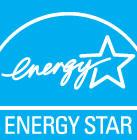
ENERGY STAR is a voluntary program managed by EPA and the U.S. Department of Energy which helps consumers save money and protect the environment through the use of energy efficient products and practices.
Bilateral Agreement: To increase the use of the ENERGY STAR label for office equipment throughout Europe, EPA and the European Union signed an official bilateral Agreement in 2001. The Agreement promotes concrete action to increase energy efficiency, continually updates and strengthens technical standards for equipment carrying the ENERGY STAR logo, and encourages and facilitates harmonization of test procedures. The Agreement has been renewed for several 5-year periods and the current period extends through 2017.
As a result of the Agreement, the EU has mandated that the European Commission and the national governments of all 27 Member States must procure ENERGY STAR office equipment for official use. Exit
ENERGY STAR also is implemented in non-EU countries including Switzerland, and in Norway, Iceland and Lichtenstein through the European Free Trade Association (EFTA). Exit
Learn more:
Increasing Resource Efficiency
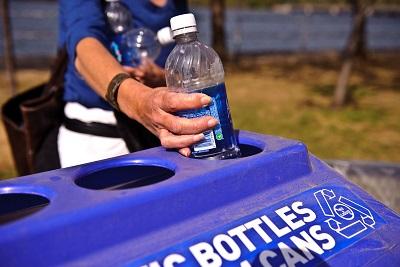
EPA cooperates with European and other international partners to promote the sustainable use of resources and minimize waste streams in a variety of areas, including efforts to reduce wasted food and address marine litter.
In September 2015, EPA Principal Deputy Assistant Administrator Jane Nishida participated in A Sustainable Future for All: EU and U.S. Efforts to Measure and Assess Progress Towards a Sustainable and Resource Efficient Economy, Exit a high-level policy discussion on sustainable development and resource efficiency with EU Commissioner for Environment and Maritime Affairs Karmenu Vella, European Environment Agency Executive Director Hans Bruyninckx and World Resources Institute (WRI) President and CEO Andrew Steer. The event included discussions on EPA’s Report on Environment and the European Environment State and Outlook Report. Exit
Strengthening Chemicals Management
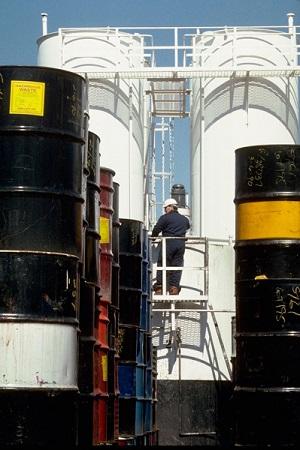
Regulatory Cooperation: An ongoing regulatory cooperation dialogue aims to help reduce risks from toxics in the U.S. and Europe. EPA and its counterparts in the European Commission and the European Chemicals Agency (ECHA) Exit share scientific and technical experience and expertise to enhance the sound management of chemicals. The dialogue also promotes regulatory best practices and information-sharing on areas of mutual interest. A Statement of Intent to enhance this cooperation was signed in December 2010. This document also includes the 2016-2017 Rolling Work Plan.
Legislation: Regulatory developments in Europe and the U.S. have made transatlantic cooperation on chemicals management more important than ever. The updated version of the U.S. Toxic Substances Control Act (TSCA) that was passed in June 2016 will enhance chemicals management efforts in the U.S. The EU’s Registration, Evaluation, Authorization and Restriction of Chemicals (REACH) program Exit has been in force since 2008.
Productive discussions between U.S. and European experts also take place in key international fora such as the Organisation for Economic Co-operation and Development (OECD).
Learn more:
Enhancing Research Cooperation
Implementing Arrangement: EPA and the European Commission coordinate research and technical cooperation under an Implementing Arrangement which was signed in February 2007 within the framework of the U.S.-EU Science and Technology Agreement Exit managed by the U.S. Department of State. This document provides a framework and foundation for technical cooperation in a wide variety of fields, including air quality management, sustainable chemistry, nanotechnology, environmental health, and development of environmental indicators to measure and track environmental quality.
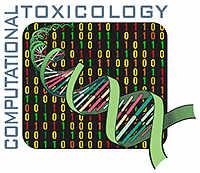
Computational Toxicology: One area of particularly strong cooperation involves complementary research on computational toxicology, which ranks chemicals more efficiently based on risks to humans and the environment and provides an alternative to animal testing. EPA maintains ongoing technical relationships with experts at the European Commission, with EU Member States such as France, and within the OECD to facilitate data exchange and sharing of methodologies and approaches. For example, EPA is working with a French cosmetics firm to investigate new screening methods that are faster, cheaper, and will reduce the use of laboratory animals which, if successful, could be used to evaluate thousands of chemicals found in commonly-used products.
Air Quality Management: EPA air quality researchers have been working for many years with their counterparts from the Environment Agency and Department of Environment, Food and Rural Affairs (Defra) in the United Kingdom within the framework of the US-UK Collaboration Agreement on Air Pollution Exposure Science. The purpose of this long-standing collaboration, which was formalized in 2008, is to share approaches and expertise to ensure that the most recent and scientifically credible knowledge is available in the U.S. and the UK for predicting future air quality, as well as assessing, developing and implementing environmental regulations and decisions. The 9th technical meeting of this EPA-UK cooperative effort will take place in the UK in September 2016.
Supporting Environmental Governance
The United States continues to build and enhance multilateral partnerships to improve environmental governance in Europe and worldwide. Through exchange of information and experts, technical meetings, and implementation of selected projects and partnerships, EPA works with European partners to strengthen institutional capacity for environmental protection and management and increase public participation.
 The REC's environmentally friendly conference centre.
The REC's environmentally friendly conference centre.Regional Environmental Center for Central and Eastern Europe (REC): The REC is a unique success story of building capacity for sound environmental governance in Europe. Created as the result of a U.S. Presidential Initiative in 1990 by EPA as the designated lead agency, the REC now has country offices in 17 countries in the Central and Eastern European region. It provides a valuable forum in which neighboring countries come together to discuss and address important transboundary and international environmental issues.
As one of EPA’s longest continuous international partnerships, the 25th Anniversary of the REC was celebrated at a ministerial conference on June 10-11, 2015 at the REC headquarters in Szentendre, Hungary.
Learn more:
- EPA's Role with the REC
- 25th Anniversary of the REC
- Timeline: 25 Years of Environmental Cooperation with the REC (1990-2015)
Enforcement and Compliance: EPA works to build enforcement and compliance capacity in Europe by working in cooperation with various regional and international networks of environmental professionals on enforcement and compliance issues. One such network, the International Network for Environmental Compliance and Enforcement (INECE) Exit was founded in 1989 by EPA and the Dutch Ministry of Housing, Environment and Spatial Planning (now known as the Ministry of Infrastructure and Environment). Exit The U.S. and the Netherlands continue to serve as co-chairs of the network.
EPA also provides enforcement training for European experts in cooperation with the International Law Enforcement Academy (ILEA) Exit in Budapest, Hungary with financial support from the U.S. Department of State.
Bilateral Cooperation: While cooperation with the European Union through the European Commission, the EU’s executive branch based in Brussels, remains a primary focus, EPA also works directly with individual European countries within and beyond the EU to share information, leverage resources, and provide complementary expertise as national-level environmental managers and regulators.
Many nations, include the U.S. and our European partners, provide financial and technical assistance beyond their own borders to developing countries who are working to improve their environments. By coordinating efforts with those from other countries, EPA works to leverage relevant programs to maximize impact and conserve resources.
